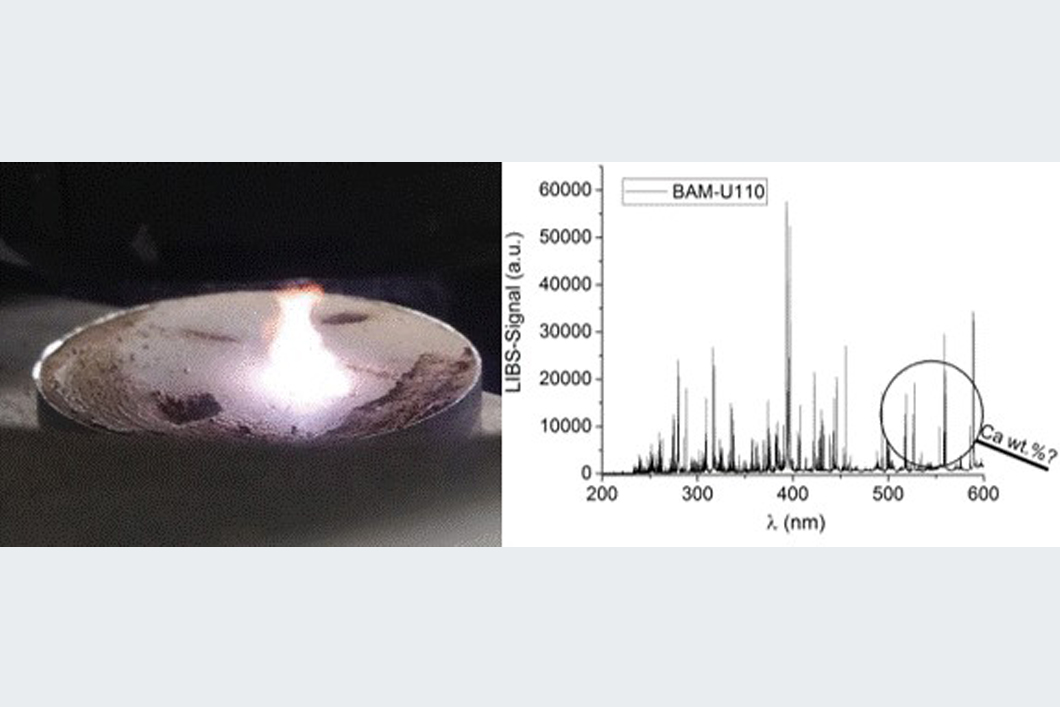
Plasma formation on the soil surface through a focused laser and detected atomic emission spectrum.
Source: BAM, Division Process Analytical Technology
Within the I4S project (Intelligence for Soil) funded by BMBF an online-sensor for the determination of macro and micro nutrients in soils has been developed. Laser-induced breakdown spectroscopy (LIBS) provides a fast and simultaneous multi-element analysis with little to no sample preparation, which makes it a possible method for real-time measurements on the field. First test measurements were performed with synthetic and real soils in the laboratory. The quantification with LIBS is challenging due to matrix effects, grain size effects and heterogeneity. For the analysis of soils from different areas of Germany a matrix-specific calibration using 16 certified reference soils was created based on a classic, univariate and a multivariate data approach (Partial Least Squares Regression). For validation of the quantitative results, all samples were additionally analysed with inductively coupled optical plasma spectroscopy (ICP-OES) and X-ray fluorescence analysis (XRF). A comparison of the different methods showed that the results obtained with the multivariate approach lead to better correlation with the reference methods (ICP-OES and XRF).
Challenges in the quantification of nutrients in soils using laser-induced breakdown spectroscopy – A case study with calcium
Madlen Rühlmann, Dominique Büchele, Markus Ostermann, Ilko Bald, Thomas Schmid
Spectrochimica Acta Part B: Atomic Spectroscopy, Volume 146, August 2018, Pages 115-121
BAM Department Analytical Chemistry; Reference Materials, Division Process Analytical Technology


